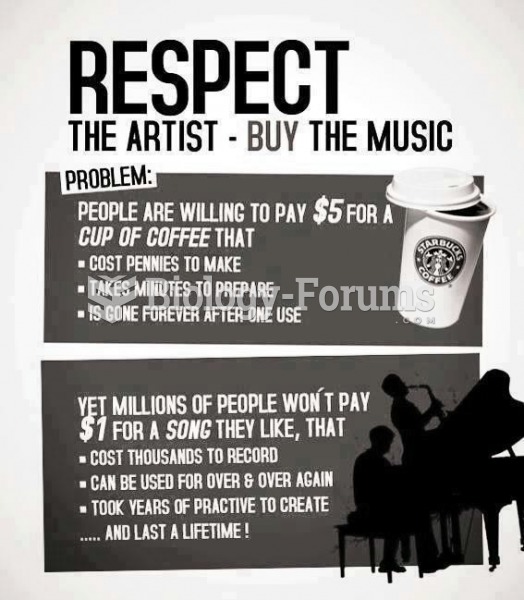|
|
|
About 80% of major fungal systemic infections are due to Candida albicans. Another form, Candida peritonitis, occurs most often in postoperative patients. A rare disease, Candida meningitis, may follow leukemia, kidney transplant, other immunosuppressed factors, or when suffering from Candida septicemia.
There are more bacteria in your mouth than there are people in the world.
Urine turns bright yellow if larger than normal amounts of certain substances are consumed; one of these substances is asparagus.
Eat fiber! A diet high in fiber can help lower cholesterol levels by as much as 10%.
Anti-aging claims should not ever be believed. There is no supplement, medication, or any other substance that has been proven to slow or stop the aging process.






